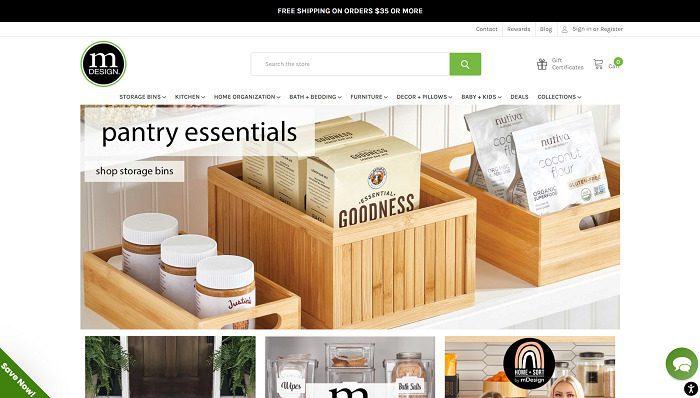Growth in the direct-to-consumer space is no longer limited to remaining ahead of trends in a brand’s core category. The first phase of growth for many DTC brands often comes from the founders’ inspiration for filling a void with a product or solution. But these brands often find themselves hitting a ceiling with their original products, particularly in a crowded field. Several DTC brands have discovered that embracing new categories provides them with an attractive growth option.
“Driving growth doesn’t mean just selling more of what you’ve been selling for a long period of time,” said Amish Tolia, Co-CEO of Leap, which provides turnkey brick-and-mortar solutions for DTC brands, in an interview with Retail TouchPoints. “You’re launching new products in new categories to encourage existing folks and new customers to do business with you.”
Prior to expanding into new categories, DTC brands must start out the same way they began their original business, by asking themselves, “What problems will these products solve?” During this period of reflection, brands must also identify how they will approach expansion by entering new categories via one of three ways:
- Expanding their reach as a trusted resource that customers look to as an authority;
- Remaining true to their value-based missions by contributing to ethical, social or environmental good; or
- Building upon existing success in a particular category by launching goods that complement existing products.
Consumer Trust Translates Into Successful Category Transition
Once a DTC brand shifts from being the new kid on the block in its original category into a trusted resource for its core products, the company can begin examining expansion into new products. At mDesign, the foundation of the brand was centered on home organization. It launched as an Amazon third-party seller in 2015 and has now expanded into additional related categories. According to Stacey Renfro, CEO of mDesign, the company has experienced brand awareness growth of 6% over the last year.
“We started in home storage and organization and we’ve expanded into accent furniture like small side tables or poofs,” said Renfro in an interview with Retail TouchPoints. “We moved into those adjacent categories. We have done a few home accessories, whether it’s kitchen towels or utensils, but it’s been very small.”
But mDesign also is venturing out of its comfort zone via partnerships. A collaboration with Ryan Eiesland and Brandie Larsen, Co-founders of organization service Home Sort, brought products designed by the popular sibling team to the home goods seller. Additionally, mDesign is partnering with interior designer Nate Berkus to release a line of goods that includes bath, bedding and organizational products, but also to enter the textile category. By aligning mDesign with recognizable names that relay a sense of trust, the company is bolstering its credibility in new segments.
“When you’re expanding into product categories that you’re not as known for, having some of these collaborations or partnerships helps give you permission to go there,” said Renfro. “If mDesign went there on our own, people might think it’s kind of weird. ‘Why are they doing X and Y, and what I know them for is Z?’ It helps validate the expansion.”
Building a Mission Based Expansion
While many DTC brands prioritize offering products that solve a problem, others add a focus on a values-based mission. Materials science company PANGAIA was founded with the ambitious goal of promoting sustainability and earth-friendly sourcing. The company became known for eco-friendly materials used to create apparel and accessories including jeans, athleisure and sunglasses. Committing further to its mission of creating ecologically sound goods, in March 2022 PANGAIA announced an expansion that went far afield from its clothing business.
“PANGAIA Health is our newest venture, with a range of products that utilize material science innovation in lifestyle products,” said Ira Laufer, CEO of PANGAIA Health in an interview with Retail TouchPoints. “The first product category of PANGAIA Health, PANGAIA Superfoods, redefines the future of food technology with a range of superfood products that balance science and nature while championing human and planetary health.”
By remaining true to its values, PANGAIA was able to justify its expansion into a new segment with the shared component of making products formulated with sustainable materials and ingredients. The company plans to expand into additional categories that align under a sustainable mission.
“PANGAIA is guided by an Earth Positive mission and PANGAIA Health will align with those same values,” said Laufer. “Super Super bars are the first product within our Superfoods category, and this is only the beginning. We will introduce additional bars this year. PANGAIA Health is exploring a range of categories such as skincare, haircare, supplements and drinks.”
Identifying Realistic Avenues of Expansion
A less risky expansion route can be to expand within a category. This can be particularly effective for brands that also offer a service component, since each interaction with a customer offers opportunities to cross-sell products. For example, when SmileDirectClub examined expansion options from its line of orthodontic teeth aligners, a transition into dental hygiene items was a natural move.
SmileDirectClub-branded dental hygiene products have breathed new life into the entire space, according to its executives, particularly through the company’s whitening line — the segment saw a 17% increase in 2021. SmileDirectClub also has seen the benefits flow back to its original product line.
“The percentage of people that start with us using the oral care products and then transition into aligners is higher than I expected by a good amount,” said John Sheldon, SmileDirectClub CMO in an interview with Retail TouchPoints.
SmileDirectClub also is using relationships with its more than 1.5 million teeth straightening clients, to turn them into customers of its CPG products seeking to preserve the beauty of their newly corrected smiles.
“We started with Walmart but we’re now in a number of retailers,” said Sheldon. “We’re in CVS, Walgreens, a number of grocers and club stores with our oral care products,” which include toothbrushes, toothpaste and countertop electronics including a water flosser.













